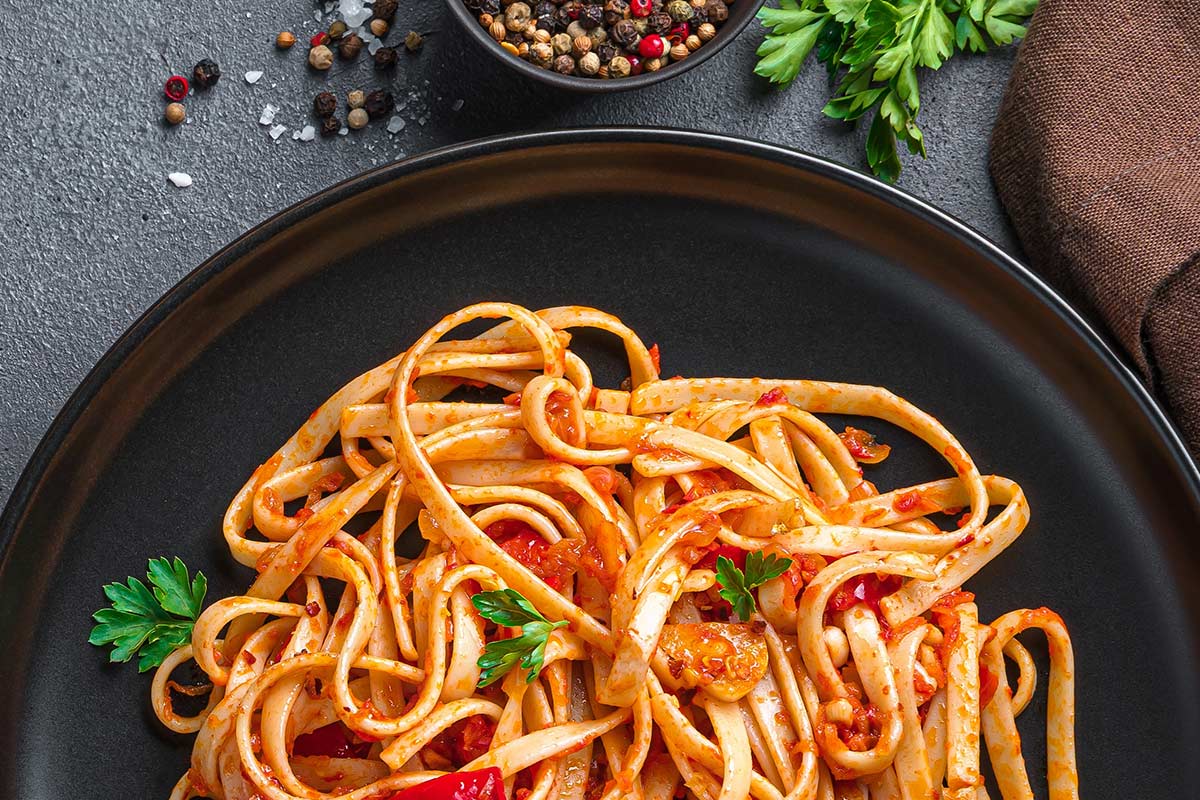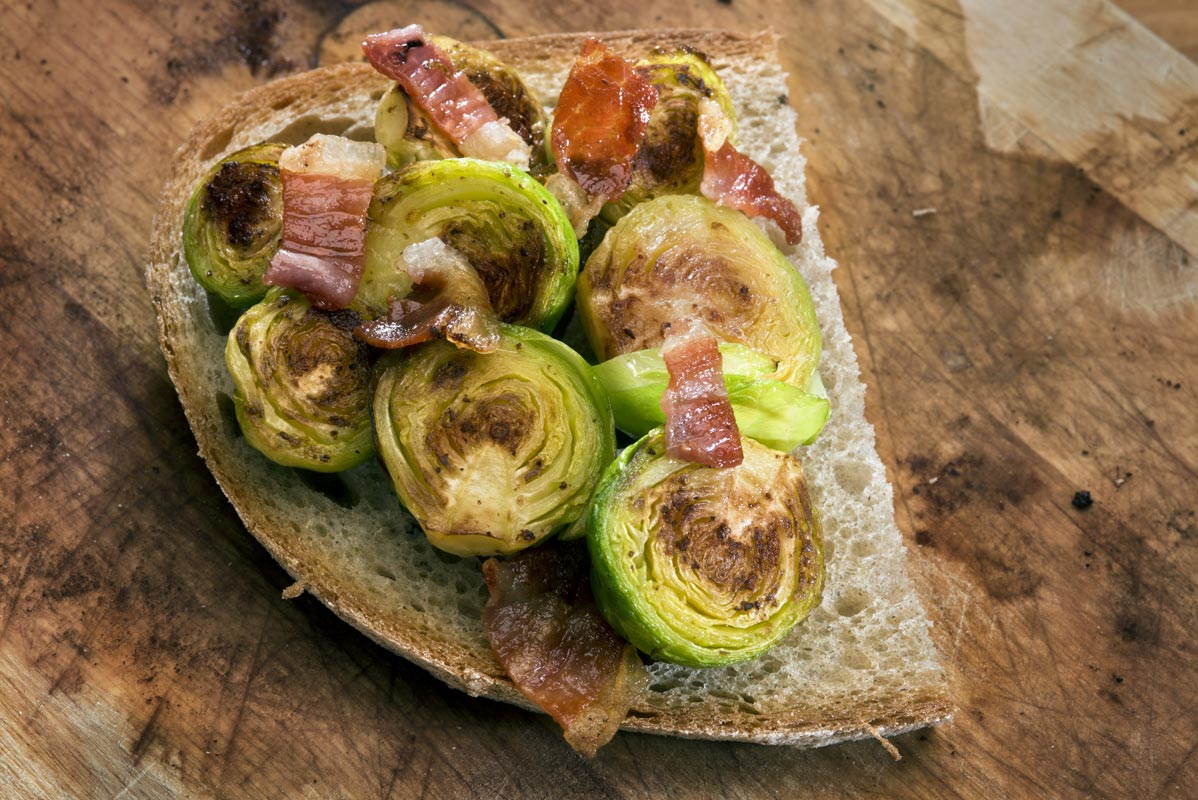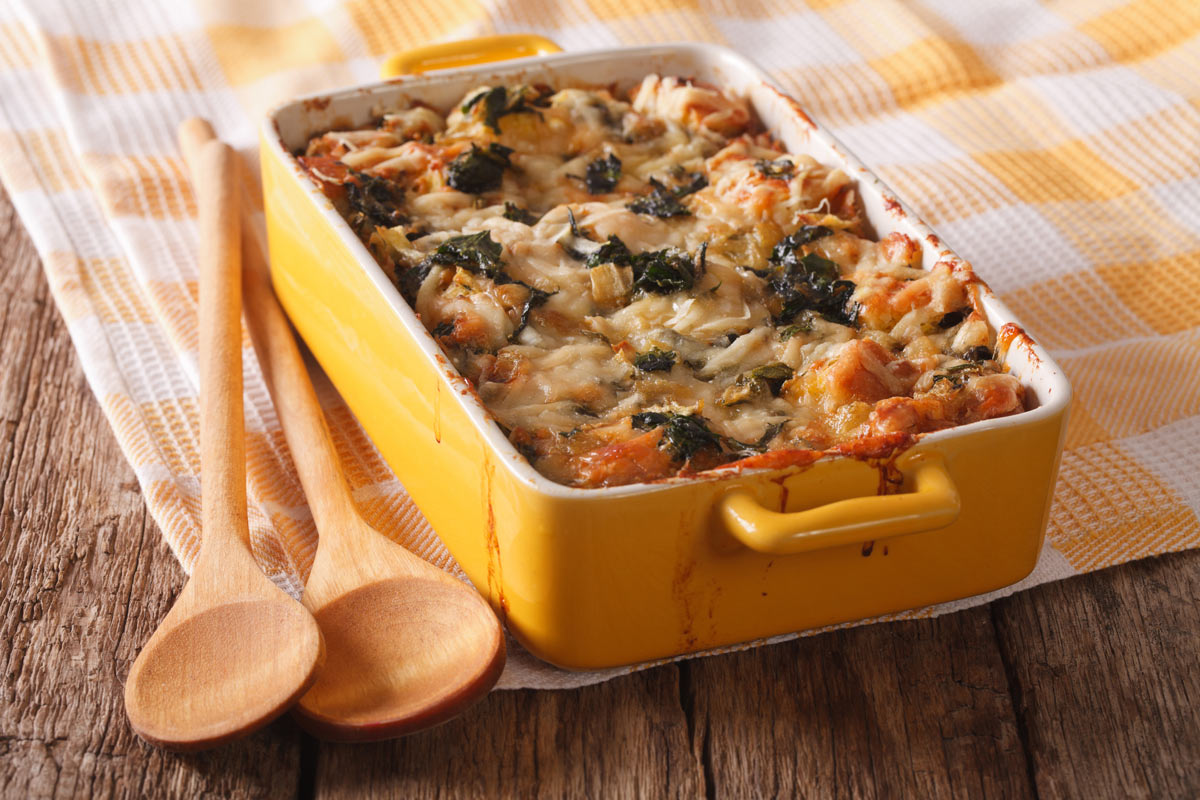Also known as pasta ca’ muddica in Sicily, this southern Italian dish is rustic food at its best. My version enhances it with walnuts and diced tomatoes. Though the breadcrumbs stood in for cheese when the latter wasn’t affordable, feel free to serve with freshly grated Parmigiano-Reggiano or Pecorino Romano.
Ingredients
- 1 pound linguine
- 2 teaspoons coarse salt (kosher or sea)
- 5 tablespoons extra virgin olive oil, divided use
- 8 garlic cloves, peeled and finely chopped
- 2 cups fresh breadcrumbs, preferably made from day-old Italian bread
- 2 ounces walnuts, coarsely chopped (optional)
- One 2-ounce can anchovy fillets, drained
- 1/2 teaspoon crushed red pepper flakes, or to taste
- 1 cup diced canned tomatoes or 8 ounces fresh cherry tomatoes, halved
- 2 tablespoons freshly chopped flat-leaf parsley
- Fine sea salt and freshly ground black pepper, to taste
Directions
Step 1
Bring a large pot of water to a boil and add the pasta and salt; set a timer for al dente, about 9 minutes. While the pasta is cooking, heat a large frying pan over medium-high heat. When hot, add 3 tablespoons olive oil and the garlic and sauté until tender. Add the breadcrumbs and walnuts, if using, and cook until lightly toasted, about 2 minutes. Transfer to a bowl.
Step 2
In the same hot pan, add the rest of the olive oil and the anchovies, stirring constantly until the anchovies dissolve into the oil. Add the pepper flakes. Whisk in one cup of the water from the pasta pot. When the pasta is ready, transfer it to the frying pan with tongs or a Chinese strainer and swirl in the sauce to coat. Add the tomatoes and parsley. If it’s too dry, add more pasta water, 1/2 cup at a time. Fold in half the breadcrumb mixture. Remove the pan from the heat and taste, adding salt and pepper as desired. Plate and top each serving with more breadcrumbs and a drizzle of olive oil.
Serves 4




